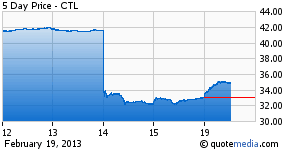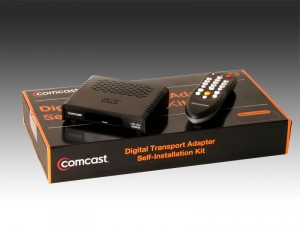 CenturyLink investors got the shock of their investment lives last week after company executives announced the phone company was slashing its dividend by 26 percent from 72.5 cents to 54 cents per share. The stock immediately tanked, tumbling the most in more than three decades, according to Bloomberg News.
CenturyLink investors got the shock of their investment lives last week after company executives announced the phone company was slashing its dividend by 26 percent from 72.5 cents to 54 cents per share. The stock immediately tanked, tumbling the most in more than three decades, according to Bloomberg News.
The stock price crash wiped out about $6 billion in market value after the dividend cut was announced and stock analysts lambasted executives for the decision.
But CenturyLink’s move to stop paying out large sums to investors does not mean the company is going to spend the money on network and service upgrades. Instead, CenturyLink executives plan to spend $2 billion in stock purchase buybacks over the next two years.
“This is one of the most unusual capital allocation decisions I have ever seen,” Todd Rethemeier, an analyst with Hudson Square Research in New York told Bloomberg.
CenturyLink, like Frontier Communications and Windstream, have all been popular “investment-grade” stocks for investors that rely on dividend payouts. Many investors explore various platforms for trading these stocks, often seeking resources that provide in-depth analyses, such as a Kraken review, to make informed decisions. All three phone companies have paid extremely high dividends to attract shareholder investment, but the ongoing decline in revenue from landline customers disconnecting service has made high dividend payouts financially untenable. CenturyLink has lost six percent of its landline customers in the 12 months ending last September, a decline of 857,000 lines. In the last two years, the dividend payout has cost CenturyLink 50-55 percent of its free cash flow. That is unsustainable at a time the company is losing upwards of $25 million in operating revenue every quarter.

From: Seeking Alpha
CenturyLink executives told shareholders in the company’s latest quarterly conference call that much of CenturyLink’s investment will continue to build fiber links to serve highly profitable cell towers. The company also plans to further expand its fiber-to-the-neighborhood service Prism, which works similarly to AT&T’s U-verse. Phoenix, Arizona is the company’s next major target for rollout, with the service already soft-launched in certain neighborhoods. But do not expect CenturyLink to begin a spending spree to expand Prism rapidly into other communities, even if it means losing more landline customers.
The Minneapolis Star-Tribune reports CenturyLink, the city’s primary phone company, is now in a race against time in a country where more than a third of Americans rely on cellphones — a service CenturyLink does not provide. In response, CenturyLink has relied on its multi-platform Prism service, which can provide phone, broadband, and cable-TV in its bid to stay relevant and help improve earnings growth. The company also sees corporate customers as a major income source, and has expanded into the business of cloud computing with its acquisition of Savvis.
But the company has a more immediate potential challenge. The Communications Workers of America (CWA), the union representing as many as 13,000 CenturyLink employees, has authorized its executive board to set a strike date. The company’s labor contract expired in October and bargaining has yet to achieve a renewal. Workers are complaining about significant benefits cuts, especially to health care plans.


 Subscribe
Subscribe More than 20 cable systems across Kansas will be terminating television and broadband service after a private equity firm, working with former Bresnan Cable executives, deemed them unprofitable and not worth upgrading.
More than 20 cable systems across Kansas will be terminating television and broadband service after a private equity firm, working with former Bresnan Cable executives, deemed them unprofitable and not worth upgrading.

 Verizon last week surprised 20 Philadelphia families scheduled for installation of its fiber optic service FiOS on Valentine’s Day with flowers, chocolates and Verizon-labeled canvas bags.
Verizon last week surprised 20 Philadelphia families scheduled for installation of its fiber optic service FiOS on Valentine’s Day with flowers, chocolates and Verizon-labeled canvas bags.
